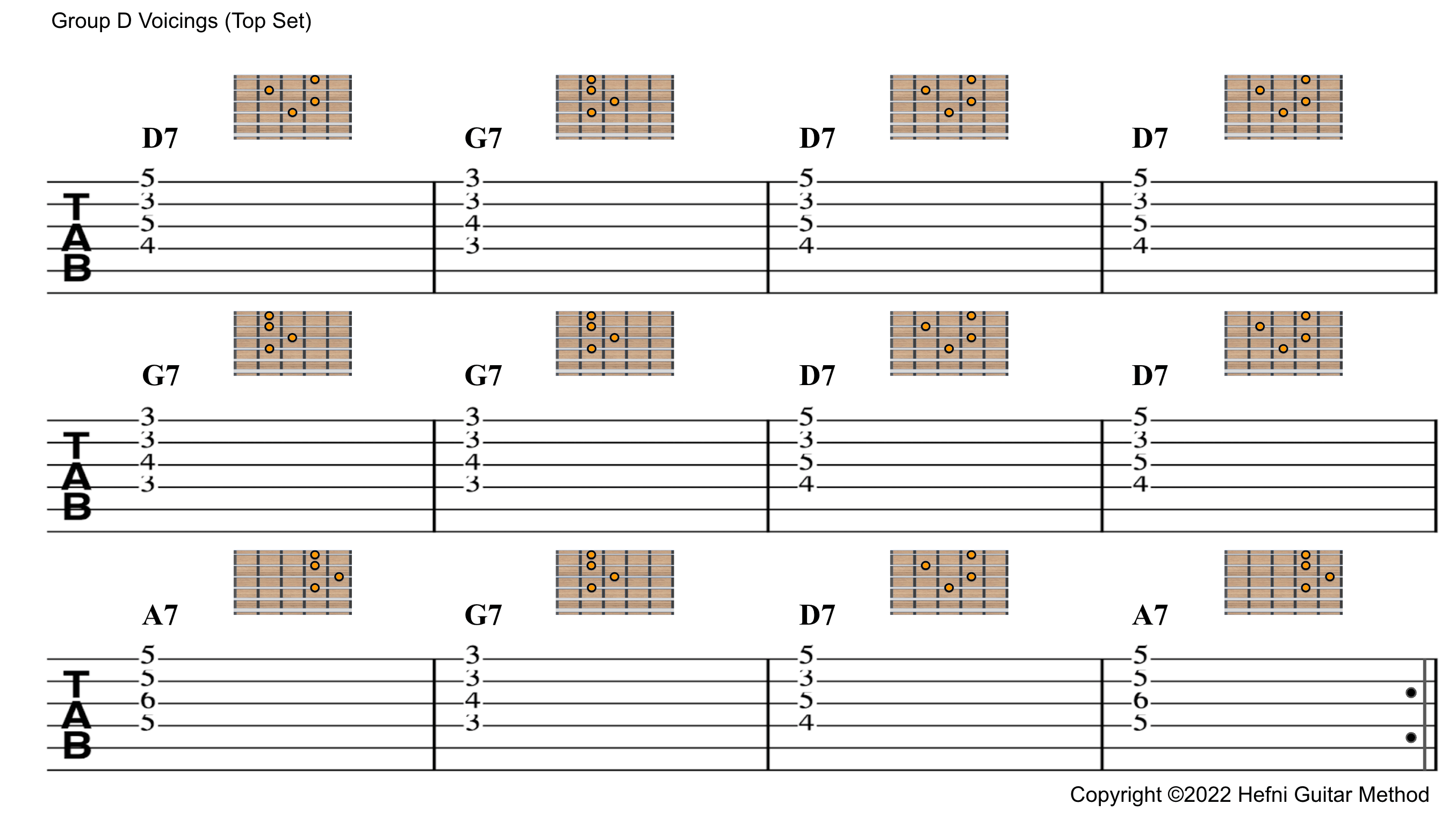Welcome to the Blues Chords Workshop Lesson 8.
In this lesson, we will explore the top structure of Group D voicings for Blues in D. This group of voicings span the 15th to 18th frets on the top 4 strings. This is the final voicing group in this series for the top strings.
Click on the video below to watch the lesson.
Learning Aids
The TABs and chord diagrams for the Lesson 8 are presented below transposed one octave down for easier fretting.

Primary Takeaways from Blues Chords Workshop Lesson 8
The main takeaways of lesson 2 are as follows:
1. Same chord shapes as those in Group B Voicings (top set)
The chord shape for the IV chord from Lesson 6 is our starting point. This will be our chord shape albeit on the 3rd fret. Similarly, the I chord from Group B Voicings (Top) will be our IV chord for this lesson. As the index finger is common to both shapes, simply barre our first finger on the 3rd fret when changing to G7 chord shape. (See chord diagram above)
2. Repeating Chord Shapes
Enough has been written about the recurrence of the chord shapes in the previous lessons to repeat again here. Therefore it should suffice to state that this phenomenon helps us learn and apply the 12 bar blues more efficiently. Hence, we can add variety when comping the Blues, by using different voicing groups up or down the fretboard.
3. Transposing of chord shapes
As all things on guitar, these chord shapes are transposable as evident in this week’s video lesson. Here we shifted the entire group of chord shapes down 12 frets on the fretboard, Essentially we are keeping the key the same except that we are playing the changes one octave down. However, if we shifted the chord shapes down say 5 frets, this transposes the key down a perfect 4th interval. In other words, we are changing the key from D Blues to A Blues.
Tips for Better Learning
Parallel Learning
For this entire series, we are sticking to the ‘key’ of D Blues for 2 main reasons. Firstly, this equips us with the practical changes for all 12 variations of dropped-2 voicings in the same key. In other words, we will have 12 options to play D Blues instead of playing in only one position. While there are other voicings such as dropped-3 for instance, those may be covered in a later series.
Also, the Blues Chords Workshop was designed in tandem with the Jazz Chords Workshop. The latter was designed in the key of C but utilises the circle of 5ths progression. On closer examination, you will discover that this progression if applied to C major will borrow certain chords particularly A7. Therefore, both series will share G7 and A7 chord shapes over the same positions.
The learner will ultimately notice certain parallels between the two courses. Understandably, not everyone is interested nor ready to learn jazz on the guitar. Notwithstanding, I have have put up both courses free on this website for your learning at your own pace. Should you choose to progress to the Jazz Chords Workshop later or are currently learning both at the same time, you will still reap the benefits from both courses. Even if you choose only to learn one course, you will still acquire the necessary knowledge you desire albeit only for that particular genre.
To summarise, it is recommended that you also explore the Jazz Chords Workshop to maximise your learning since you will have some ‘link’ from this Blues Chords Workshop. However, you can choose to learn consecutively or concurrently but at your pace.
